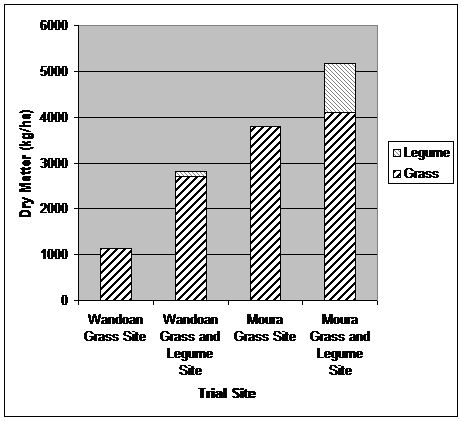



Legumes Allow 40 Per Cent Higher Stocking in Australia
Adding legumes to rangeland pastures in Australia can benefit carrying capacity for many years.This is according to results from central Queensland in a study on buffel grass pasture sown with Caatinga stylo.
Not only was stocking density able to lift 40 per cent, but resistance to Indian Couch increased, explains Meat and Livestock Australia, the body overseeing the study.
The Trial
In 1997 a 20ha paddock was divided in two and half planted with the buffel grass varieties, Biloela and Gayndah, as part of an MLA Producer Demonstration Site.
The MLA team writes that the remainder was planted with buffel varieties Primar and Unica, as well as the legume Caatinga stylo.
The aim was to test the legume’s influence on pasture quality and yield and, more recently, the response to applications of various rates of phosphorus (P) fertiliser.
The Good News
Gavin Peck explained that producers were impressed by the performance of the legume/pasture paddock which produced 40 per cent more pasture with a corresponding increase in carrying capacity.
“Even 18 years after the initial planting, the legume/pasture paddock is in good shape, with strong persistence of all pasture varieties including the more nitrogen-demanding Biloela buffel,” he said.
“However, in the buffel-only paddock there were symptoms of declining nitrogen availability (pasture rundown) and invasion of Sabi grass, Indian couch and native grasses. There was also a lot less Biloela buffel present.
“Producers were very relieved to hear there is a pasture alternative that will resist those less productive species.”

Impact of P Fertiliser
The phosphorus trial, which started in 2012, precipitated discussion at the field day on the merits of using P and how best to apply it.
“Our trial (on P deficient soils) measured the response of pasture and legumes to five different rates of P fertiliser – zero, 10, 20, 50 and 100kg of P/ hectare,” Gavin said.
During the first summer post fertiliser application, legume yield and total pasture yield increased with increasing P rates up to the application rate of 50kg/ha, but plateaued at higher rates.
After the third summer, total pasture yield followed a similar trend as the first year of increasing pasture yields to P fertiliser application, but the proportion of grass and legume had started to change with a greater proportion of grass at the higher fertiliser rates.
Gavin said producers were keen to see further trials on the use of P fertiliser in northern grazing systems, including its economic benefit and the most cost-effective methods of application.
.JPG)
Pasture dry matter production over a 9 month period (Aug 2012 – Apr 2013) for grass only compared to grass with legume pastures.


